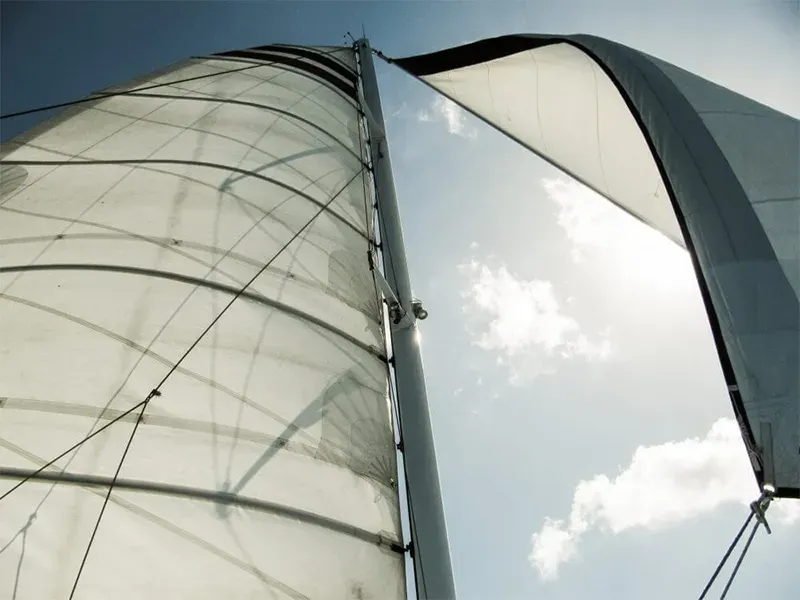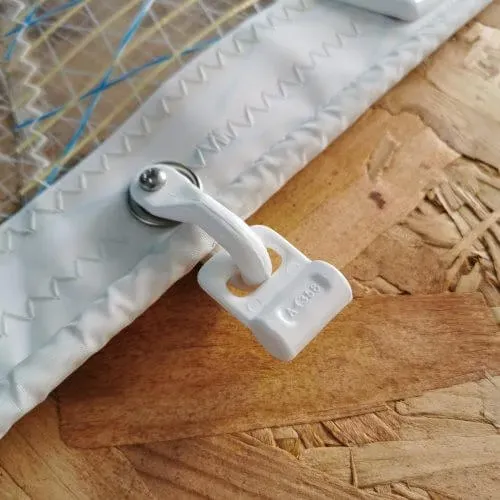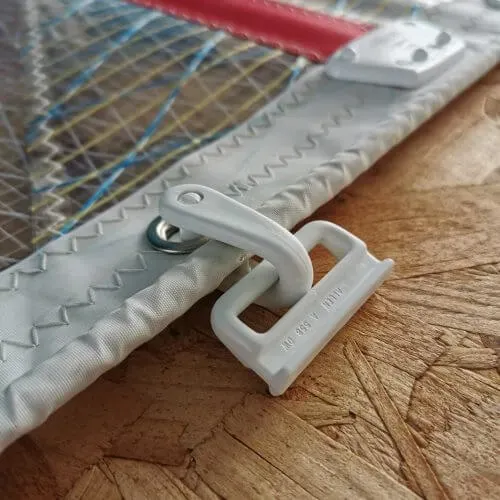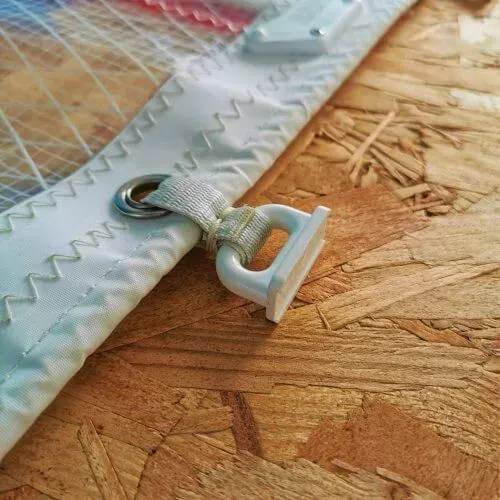 Sail slides and slugs may not be the most exciting piece of equipment found on a sailboat.
Sail slides and slugs may not be the most exciting piece of equipment found on a sailboat.
However, they are a very useful bit of kit and can make your life on board a vessel much easier. Sail slugs and slides are most commonly found on the luff or foot of a sail, yet they are also a popular choice for catamaran trampoline attachment points.
Why use a sail slide or slug?
So, you may be wondering why you would even bother with a sail slide or slug, especially when your mainsail has a perfectly good bolt rope. Well, there are a few reasons. Firstly, the slides and slugs offer a reduction of friction over a sail boltrope, this is because there is less material being inserted inside the mast track. This reduction in friction can make hoisting and lowering a sail much easier. Secondly, with a track stop installed the sail slides cannot exit the mast meaning it is possible to lower a sail single-handed and not have the sail fly away in the wind, it will also fold itself over the boom as it’s lowered.
What is the difference between sail slide and slug?
Slug – Sail slugs feature a round or semicircle shape that is inserted into the track. This design allows for more articulation.
Internal Slide – A small “T” shape that is inserted inside the track. Slides are one of the more commonly used versions. The “T” offers an ability to suit a wider range of tracks as well as take a higher load.
External Slide – A wrap-around design and suitable for mounting on the outside of a track which is more commonly seen on older wooden masts.
A.358 sail slug attached to sail with A.449 screw shackle.
Which should you use?
It all comes down to what mast track you have. If your boat currently has a sail with slides or slugs then it is recommended that you take the measurements from your existing hardware and compare it to what is available.
When selecting new slides or slugs you want to ensure there will be some wiggle room so that the slides cannot stick or create extra friction in the mast track. However, it is also important that there isn’t too much space, otherwise, the slide could escape from the track.
You should measure the track of your mast with a ruler or measurement calliper to find out the distance between either side of the track opening and how much space there is inside the track. 
A.558DW sail slide attached with A.749 snap on shackle.
Installation of sail slides and slugs.
Once you have chosen the slide or slug and have checked it against your mast track to see if it fits correctly, you will then need to consider how to attach it to the sail.
Sail Shackle – The nylon sail shackle is the cheapest and easiest option for attaching the slide to the sail. Sail shackles are available in a variety of sizes, so it’s important to check they will fit around both the slide and the eyelet in the sail. Offered with either a screw together or snap-on attachment.
Metal Shackle – The strongest option which also has the most choice. However, a metal shackle can bash against the mast when a sail is flogging, which can damage the mast.
Webbing – The recommended option from sailmakers as it gives the nicest finish as well as proving the most forgiving for the sail. This choice is the most labour intensive and will require a sailmaker or experienced seamstress to install the slide or slug.
 A..90 sail slide attached with webbing.
A..90 sail slide attached with webbing.
Once you have chosen and installed the correct sail slide or slug, it’s time to get on the water and reap the rewards of hoisting and lowering the sail with ease.
Happy sailing!











































































































































































